Do you know Nucleoplasty has 80% Success Rate in Relieving Chronic Back Pain!
In the realm of spinal surgeries,to address chronic back pain and related conditions, nucleoplasty has emerged as a groundbreaking procedure that offers a minimally invasive approach. This innovative technique aims to alleviate discomfort, restore mobility, and improve health and overall quality of life for patients.
By focusing on its minimally invasive nature, impressive success rate, and rapid recovery, nucleoplasty has become a preferred option for those seeking a less invasive and more efficient solution to their spinal concerns.
What is Nucleoplasty?
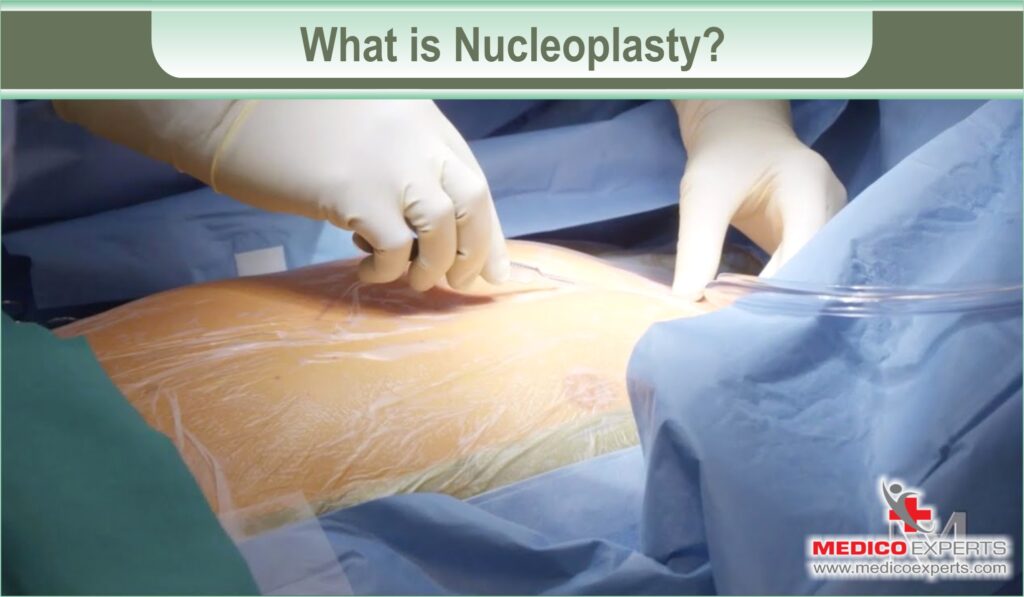
Nucleoplasty is a surgery and an image-guided therapy that is used to treat back pain and leg pain caused by herniated discs. It is a procedure that utilizes radiofrequency energy to decompress the affected disc, providing effective relief for symptomatic conditions.
Nucleoplasty is performed in an outpatient setting and offers a viable alternative to traditional open surgeries for disc bulges and herniations.
What are the different steps in nucleoplasty surgery?
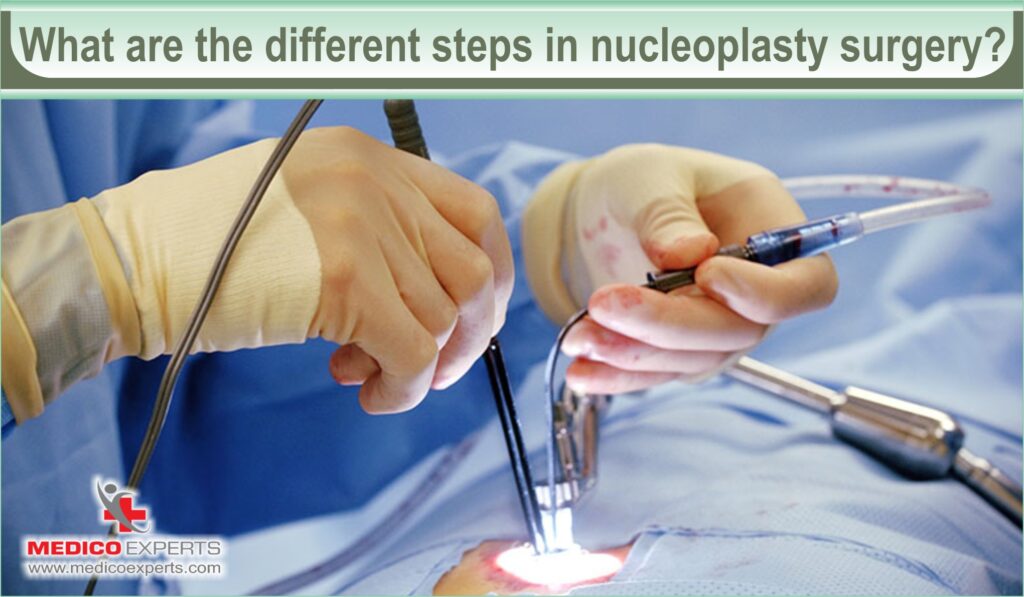
Following are the steps in nucleoplasty procedure:
- Preparation
The patient is positioned on the operating table, and the area where the procedure will be performed is cleaned and sterilized. Anesthesia is administered to ensure the patient’s comfort during the procedure.
- Insertion of the Needle
A small needle is inserted into the target disc under fluoroscopic guidance. The needle is carefully guided into the center of the disc, where the radiofrequency technology will be used.
- Nucleoplasty Device Insertion
Once the needle is in place, a nucleoplasty device is inserted through the needle. The device consists of a thin catheter with a radiofrequency electrode at the tip.
- Radiofrequency Ablation
The radiofrequency electrode emits a controlled amount of thermal energy, which is used to ablate or remove a small portion of the disc material. This process reduces the volume of the disc and relieves pressure on the surrounding nerves.
- Withdrawal of the Device
After the desired amount of disc material is removed, the nucleoplasty device is slowly withdrawn from the disc. This is done in a controlled manner to minimize any potential damage to the disc or surrounding structures.
- Monitoring and Evaluation
Throughout the procedure, the surgeon may use fluoroscopy or other imaging techniques to monitor the progress and ensure accuracy. After the device is withdrawn, the surgeon may perform additional imaging to evaluate the results of the nucleoplasty.
- Recovery
Once the procedure is complete, the patient is monitored in a recovery area. Depending on the individual case, the patient may be discharged on the same day or kept overnight for observation.
What is the Recovery Time in Nucleoplasty Surgery?
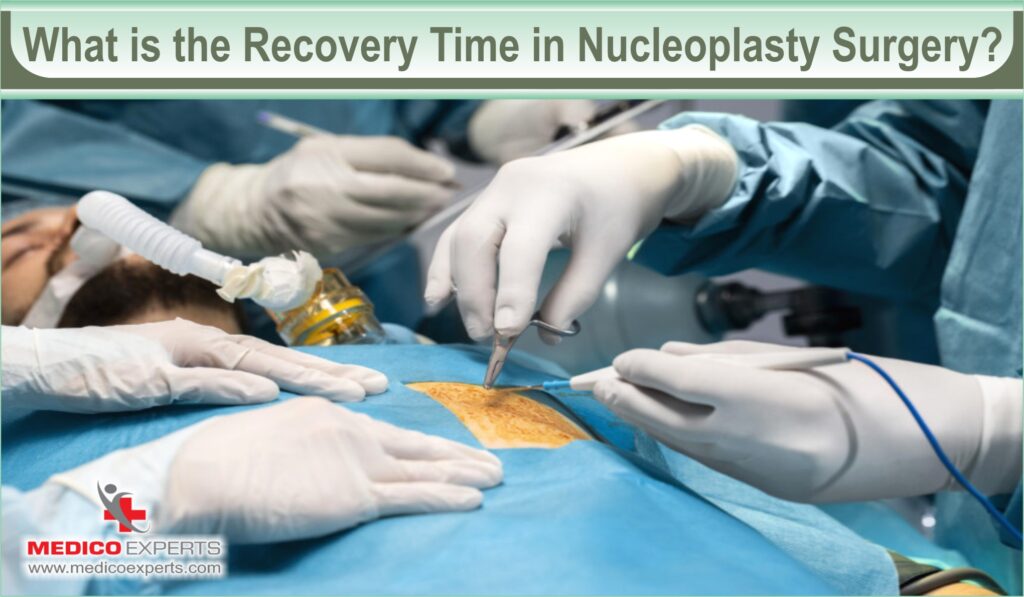
Improvement and recovery after nucleoplasty may be gradual, and it can take up to three months for full recovery.
People typically return to their prior activity levels within one to six weeks after nucleoplasty. Nucleoplasty is a minimally invasive procedure that offers less morbidity and shorter recovery time compared to open surgical discectomy
Patients are often discharged after the procedure and asked to rest for one to three days with limited sitting or walking. Most patients go home within hours of the nucleoplasty procedure, which is usually done in an outpatient setting
What are the side effects of a nucleoplasty?
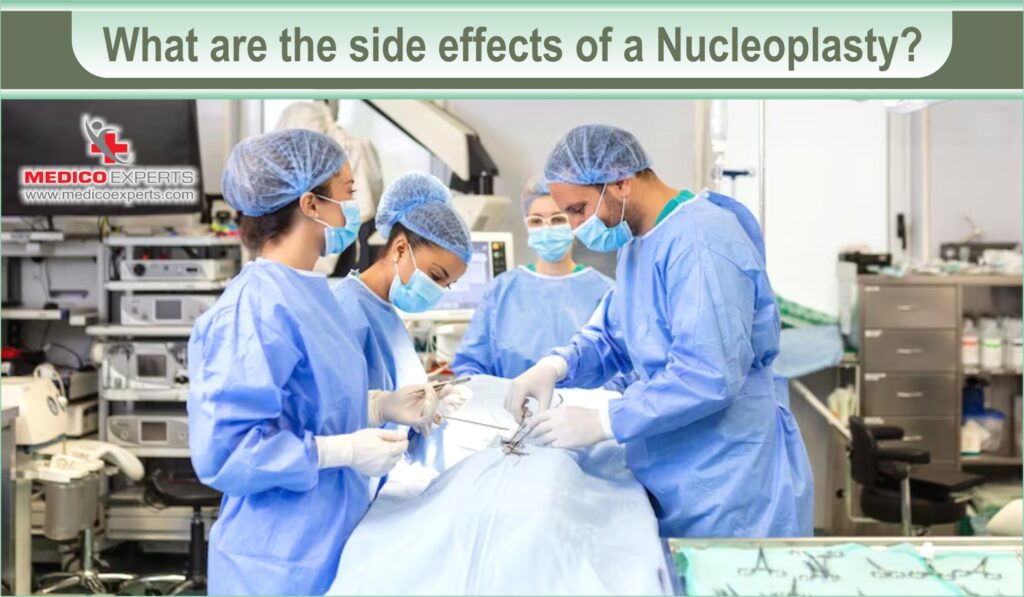
Here are some potential side effects of nucleoplasty:
- Soreness at the needle puncture site
- Numbness in the lower leg
- Increased pain at the needle insertion site
- Temporary side effects related to local anesthesia
Nucleoplasty vs. Open Surgical Discectomy
Nucleoplasty and open surgical discectomy are two different procedures used to treat lumbar disc herniation (disc in the low back area of the spine bulges or herniates from between the bony area of the spine) Here is a comparison between nucleoplasty and open surgical discectomy:
- Minimally Invasive vs. Invasive
Nucleoplasty is considered a minimally invasive procedure, involving the use of radiofrequency technology to remove a small portion of the disc material. On the other hand, open surgical discectomy is an invasive procedure that requires a larger incision to access the affected disc.
- Effectiveness
Nucleoplasty is as effective as open surgical discectomy in treating lumbar disc herniation. Both procedures aim to relieve pressure on the nerves by removing or reducing the herniated disc material.
- Recovery Time
Nucleoplasty generally offers a shorter recovery time compared to open surgical discectomy. Patients often go home within hours of the nucleoplasty procedure, while open discectomy may require a longer recovery period.
- Invasiveness and Morbidity
Nucleoplasty is considered less invasive than open surgical discectomy, resulting in less morbidity. Open discectomy involves a larger incision and more tissue disruption, which can lead to a higher risk of complications.
- Patient Selection
The choice between nucleoplasty and open surgical discectomy depends on various factors such as the patient’s condition, severity of symptoms, and the surgeon’s recommendation. Some patients may be better suited for one procedure over the other.
What is the Success Rate of Nucleoplasty Surgery?

The success rate of nucleoplasty surgery for treating lumbar disc degenerative( wearing of cushioning in your spine) low back pain varies widely. The reported success rate of substantial pain relief post-nucleoplasty ranges from 6.3% to 84%.
In a study, the short-term success rate of nucleoplasty was reported to be 63.5%, but 18.7% of patients required additional surgery at the index level.
Internationally, nucleoplasty has been reported to have a greater than 80% success rate for treating disc protrusion or disc herniation.
Another study reported an overall success rate of 79% for nucleoplasty, with 67% success in patients who had previous surgery and 82% success in those without prior surgery.
The success rate of nucleoplasty and similar percutaneous lumbar discectomy methods is approximately 50%, and careful patient selection is important to increase the success rate.
What is the cost of Nucleoplasty Surgery?
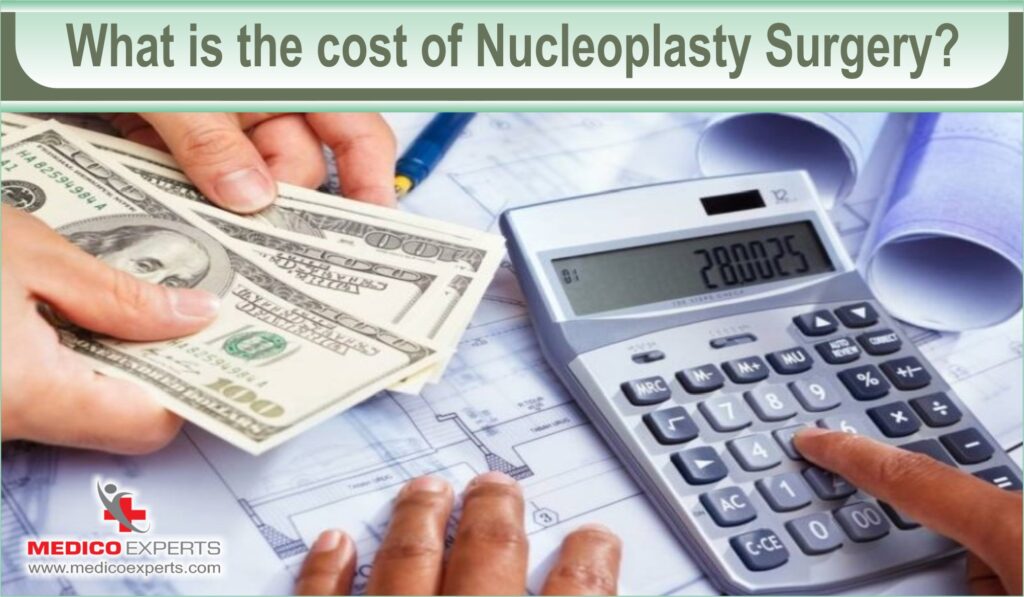
The cost of this procedure is between ₹1,80,000 to ₹ 2,50,000 in India and the cost is approximately $27000 in the USA.
Conclusion :
Nucleoplasty is a neuro-orthopedic procedure that can be used to treat symptoms associated with disc protrusion or disc herniation.
The efficacy of nucleoplasty surgery has been reported to be promising and efficacious. It can be considered as a safe and effective treatment option for patients with leg pain due to disc herniations.
MedicoExperts has an experienced panel of orthopedic surgeons who can perform Nucleoplasty without any complications. Ensuring a swift recovery that allows you to return to your work within a short time span after surgery.



